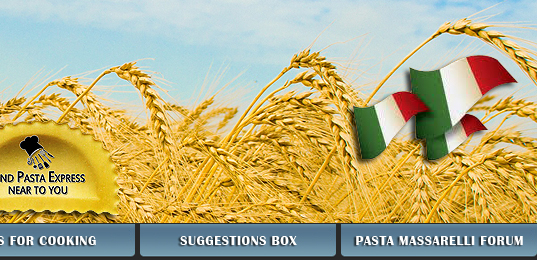|
 |
Properties Flour
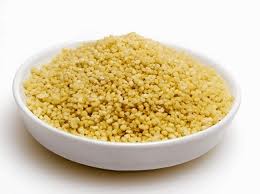
|
Durum Wheat Semolina
The view of the nutritional Durum Wheat Semolina shows a high content of protein and dietary fiber.
We must emphasize, also, the mineral elements like Potassium, Iron and Phosphorus, and vitamins such as Thiamin and Niacin.
|
It is important to underline the presence of Carotenoids, Lutein and Beta-Carotene that, among all the substances that act beneficially in the grain, seem to play a preventive role in the process of cell aging and in relation to some forms of cancer. In particular, it should be noted, as the Pasta obtained from the Durum Wheat Semolina has an antioxidant content than that found in red grapes, which is considered the reference product for the antioxidant capacity.
Finally, it should be noted, in common with all other cereals, that the content of complex carbohydrates (starch) establish a contribution that grants 45% of daily energy. The presence of this proportion in the diet of complex carbohydrates by the body to administer a prolonged energy in the time in order to avoid abrupt changes in the rate of blood sugar.


|
Kamut Flour
Kamut is a very ancient grain. We calculate that more than 5,000 years ago, was cultivated by the Egyptian people, and its appearance is similar to that of wheat, with the difference that its grains are larger and therefore, for this reason it is called "the giant of wheat".
|
Kamut, thanks to its properties and characteristics, it adapts well to the ways of organic farming, since the constitution of the plant is very strong and very able to withstand different weather conditions. Kamut contains 9.8% of water, the proteins are present in the approximate amount of 17%, with 68% carbohydrate and 2% crude fiber. As with other grain types, cholesterol is absent.
Between the minerals are included Calcium, Iron, Magnesium, Phosphorus, Potassium, Copper, Zinc, Sodium, and Selenium.
Between the vitamins are present those of B group (Thiamin, Riboflavin, Vitamin B6) and vitamin E, this last present in an amount equivalent to 30% in comparison to common wheat.
Very important, finally, the presence of many Amino acids with a concentration much higher than of traditional wheat.
The notoriety that the Kamut has acquired over time, is mainly due to the increasing prevalence of allergies to foods. After extensive studies in the United States, has shown that approximately 70% of people who can not tolerate traditional wheat, due to an allergic reaction, can safely consume Kamut.
The same does not apply, no doubt, for celiac peoples.
Kamut, in the same way of the grain, contains gluten to which it can not be consumed by people with intolerance to gluten.
Much appreciated, more of nutritional properties, its excellent digestibility and absorption.
Need to underline the presence of Selenium, which, thanks to its antioxidant properties, is capable of protecting the body against the feared effects of free radicals.

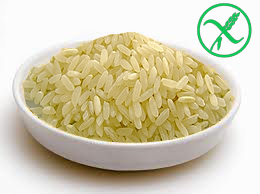
|
Rice Flour (Gluten Free)
Rice is the most popular cereal in the world.
It is the richest of starch and the poorest of protein.
It is a cereal, which contains very few calories and has an index of satiety medium-low, although greater than of Pasta becasue, absorbing a greater quantity of water, develop a
|
volume and weight greater weight to equal calories.
The white rice may therefore be consumed mainly by people with irritable bowel syndrome and can be eaten when we are emerging from a period of gastrointestinal disorders.
Keep in mind everything from tips for healthy eating.
Contains Potassium, Calcium, Phosphorus, Niacin.
Pasta made with rice flour is recommended for those suffering from gluten intolerance: the Celiacs.

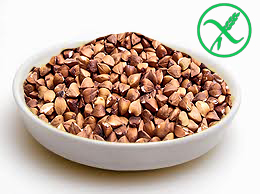
|
Buckwheat Flour (Gluten Free)
The buckwheat, with scientific name of Fagopyrum esculentum, is an annual herbaceous plant belonging to the family of Polygonaceae and not, as many mistakenly do, to the Gramineae, considering it a cereal.
The plant is probably native to Asia and was introduced in
|
Europe by the Turks during the medieval period.
Buckwheat is grown primarily for obtaining flour for food use, its seeds instead, with the plant, are used for foraging livestock.
Buckwheat is composed of 10% water, 10% fiber, 2.1% ash, carbohydrates, proteins and fats.
The presence of discrete minerals in detail are: Calcium, Phosphorus, Potassium, Magnesium, Zinc, Manganese and Iron.
In the Buckwheat are present some B-group vitamins namely vitamin B1, B2, B3, B5 and B6, is also present as vitamin E.
The Amino acids present are: Alanine, Arginine, Cystine, Aspartic Acid, Glutamic Acid, Glycine, Isoleucine, Lysine, Methionine, Valine, Threonine, Proline and Tyrosine.
The calories provided per 100 grams of Buckwheat correspond to 350.
The Buckwheat, in the form of flour, is indicate in the diet of people suffering celiac diseases, since it contains absolutely no gluten.
Used for prepare Pasta, Bread, Cookies, etc. which in fact can be consumed by celiac peoples, with good health benefits.
If consumed regularly, help that has problems with the cardiovascular apparatus, renal and sexual, as its properties help eliminate excess fluids.
In addition, buckwheat contains Chiroinositolo which has a key role in reducing blood sugar and treat diabetes.

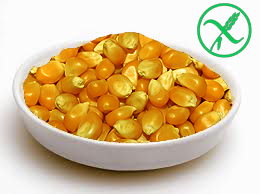
|
Corn Flour (Gluten Free)
The Corn and corn Pasta are synonymous of health and a perfect gluten-free diet, balanced and high in fiber, protein, carbohydrates and vitamins.
The properties of corn are known: the corn brings a rich amount of folate, a substance necessary for proper
|
functioning of DNA and RNA, the foundations of the chemical life.
The Corn is therefore indicated during periods of growth, such as children and for pregnant women.
Corn is also a source of thiamine (vitamin B1), which helps to Keep the activities of brain cells involved: the corn dough is also good for the eyes, thanks to the presence of beta carotene, which delays the degeneration of the eye linked to ages.
Vitamin B12 and folic acid in the corn play a preventive action against anemia caused by iron deficiency.
Those who have digestive problems may find an ally in a dish of Pasta Corn to the fiber contained. These slow down the absorption of sugars and help to keep low levels of glucose in the blood.
The Corn, also regulates the activity of the thyroid and metabolic functions related to it.
In the Corn there is an oil that regulates blood cholesterol, lowering the level.
In particular, the Pasta Corn plays a diet function, helping to slow the spread of atherosclerosis and diseases related to it.
There are so many properties of corn and Pasta corn, allies that nature has given us to keep in shape, with taste and lightness!
As we know, celiac disease is the most known intolerance to gluten. The celiac can consume foods made from corn flour, precisely because the cereal does not form gluten on contact with water: corn, in fact, contains low amount of gliadin (a protein component of gluten), but is rich in amino acids alanine and leucine. Precisely for this particular composition, the gluten in corn is not formed.
The Pasta obtained from corn flour have high value in the daily nutrition not only intolerant of gluten but of all those who want to keep fit, fighting the swelling of the stomach after a plate of pasta and red tape that often comes with it.

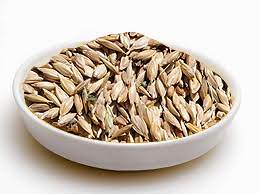
|
Spelt Flour Dicoccum
Spelt is an herbaceous plant, its scientific name is Triticum Dicoccum, belongs to the family of Gramineae.
The appearance of the Spelt plant is very similar to that of wheat and its cultivation dates back over 5,000 years ago.
Spelt is composed of approximately 10% Water, Protein
|
15%, 67% Carbohydrate, Fiber Food Soluble and non-minerals, starch and various amino acids.
Between the minerals is detected the presence of Potassium, Iron, Calcium, Sodium and Phosphorus.
The most important Amino acids present in the Spelt are: Arginine, Leucine, Lysine, Alanine, Aspartic Acid, and Tryptophan.
The Integral Spelt is rich in Phosphorus, Potassium and Magnesium, vitamins A, B2 and B3. It is recommended in diets.
Thanks to its high solubility, the Spelt it allows our body to more easily absorb the nutrients contained therein.
Also Spelt contains the particular properties of carbohydrates capable of promoting the coagulation of blood and at the same time to stimulate the immune system.
The high content of protein in the Spelt is able to give a feeling of fullness soon after its consumption and is well suited for those people who have weight problems.
Spelt contains a higher percentage of protein than wheat which are moreover more digestible.
From another side, Spelt contains many hypoallergenic substances and many people who can not tolerate for allergy problems can easily replace it with Spelt.
Although he has excellent nutritional properties Spelt is the cereal with the least calories of all: every 100 grams of edible portion 335 calories produced.

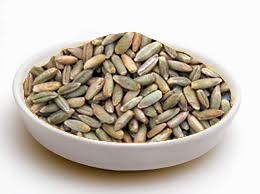
|
Whole Rye Flour
From a nutritional standpoint the Rye is the cereal which comes closest to wheat.
It produces pasta and bread (even if does not contain much gluten) and gives rise to a pasta very dark, with a characteristic flavor.
|
Rye is among the richest grain of Sodium, Potassium, Calcium and Iodine, contains good amounts of Iron and Folic Acid, important in the regeneration of the blood and in maintaining the elasticity of arteries.
The Rye Flour has a low glycemic index, equal to 45 (compared to 85 for wheat flour) and is therefore particularly suitable for diabetics.
It is a food with great nutritional properties: contains Carbohydrates, Proteins, Minerals (Iron, Calcium, Phosphorus), vitamins (Group B and E) and is rich in Fiber and Lisana, an essential Amino Acid, of which other cereals are deficient.
The richness in fiber makes it a useful food for diets intended for weight reduction. In fact, have less calories than other cereals.
The Rye Flour has a high amount of fiber that helps regulate the intestinal flora and to treat and prevent constipation, it contains cellulose fiber which stimulates intestinal peristalsis Improved circulation.
High property thinners are recommended to prevent aging of the arteries, hypertension and many cardiovascular-related accidents.

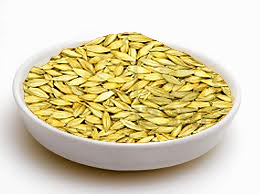
|
Enkir Flour
Wild ancient grain, Enkir is a "dressed" cereal, belonging to the diploid species domesticated in the Near East 10-12.000 years ago.
It is considered the father of cereal and still grows wild in parts of the Fertile Half Moon (Turkey and Iran).
|
It is also referred to as the true organic cereal.
i
It has high protein content, which averaged 18% (with peaks up to 24%) and a high amount of Carotenoids that have important roles in cellular function and are effective antioxidants.
The Enkir Flour is natural yellow color.
The Enkir Flour comes from a careful selection of ancient cereal varieties with unique aromas and flavors of properties, which are developed through time.
|
|
|
|
|


